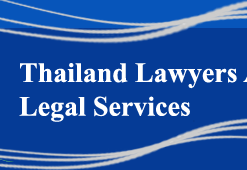



    |
|
| |
|
The Investment Regime in ASEAN Countries
Dr. Lawan Thanadsillapakul
Malaysia
There are generally no restrictions on foreign participation in the manufacturing sector. However, there are guidelines on foreign equity participation in the manufacturing sector, which are governed by the level of exports proposed by the applicant companies. In Malaysia (which limits ownership depending on the proportion of production exported), foreign equity in any manufacturing company is required to be licensed(74) under the Industrial Co-ordination Act 1975 (ICA) by the Ministry of International Trade and Industry (MITI)(75). There may be equity conditions annexed to a licence. It is difficult for a branch of a foreign company to obtain a manufacturing licence, and therefore a foreign company wishing to establish a manufacturing operation must generally incorporate a subsidiary.
However, MITI allows up to 100% foreign equity for a manufacturing company that exports 80% or more of its products. Foreign investors may also hold up to 100% of equity if the products do not compete with those manufactured locally for the domestic market and at least 50% of the products are exported, and if it invests RM 50 million or more in fixed assets, or implements projects which have at least 50% value added. Also 100% foreign equity may be allowed for companies producing high technology or priority products for the domestic market. Proportions of 30%, 51% and 79% of foreign equity may be permitted, depending on the level of technology involved and the ratio of exports. The reason for these restrictions is to allow ethnic Malaysians to participate proportionately in business. These policies clearly show that Malaysia, like other ASEAN countries, has strongly employed the export-push policy and encouraged the development of high technological industries for up grading technology.
Generally, there are no restricted sectors for foreign investment, except those that produce supporting parts and components. These include plastic packaging material; plastic compound/masterbatch; plastic injection moulded components and parts for the electrical, electronics and telecommunications industry; paper packaging products; metal fabrication; and foundry products. However, these restricted sectors are open to foreign investment that complies with the specific equity policies and the requirements imposed on the projects granted manufacturing licences stipulated in ICA 1975.
In addition, in certain industries where local expertise and capabilities have developed to a satisfactory level, the government regulates the levels of foreign equity ownership. This is because the government has the objective to provide more opportunities for local manufacturers. This also shows the investment policy of this country to balance economic interest of domestic and foreign investors.
The Philippines
The Philippines, like other ASEAN countries, has limited ownership ratio of foreign investors with the objective to encourage domestic investors to take more part in business firms. The ownership restriction has been implemented relevant to the negative list (discussed below) where certain areas of investment require majority of local shareholder in the company. This also aims to secure such fields of business to be operated by local investors on the grounds of guarding national economic strength, and less dependence on foreign investment especially in public consuming industries.
The Foreign Investment Act 1991 has deregulated the ownership restriction in companies catering to the domestic market, except for the areas of activity contained in the negative list (APEC: 1998, RP-8). There is a move to further reduce the coverage of the negative list through the elimination of the specific laws that restrict foreign equity participation in the covered activities (ASEAN Secretariat: 1998, 34).
In the Philippines, the Constitution and other national laws impose minimum Filipino ownership requirements in certain areas of investments. These restrictions are embodied in the Foreign Investment Act, which provides a negative list having two component lists: A and B. List A includes all areas of investment in which foreign ownership is limited by mandate of the Constitution and specific laws. Under the Constitution, the ownership and management of the mass media is limited to citizens of the Philippines or to corporations or associations wholly-owned and managed by such citizens. Educational institutions, except those established by religious groups and mission boards, are limited to Filipinos or to corporations or associations at least 60% of whose capital is owned by Filipinos. The advertising industry and pawnshops are limited to Filipinos, or corporations or associations whose capital is at least 70% owned by Filipinos. Also the operation of public utilities and financing companies are reserved for Filipinos for at least 60% of the investment. Some sectors, such as retail trade business, are totally reserved for Filipinos requiring 100% Filipino ownership.
List B consists of more sensitive areas of activities and enterprises concerning security that are completely closed to foreign investment. These include: defence-related activities, such as the manufacture and distribution of firearms and explosives; the manufacture and distribution of dangerous drugs, all forms of gambling, night-clubs, bathhouses, massage parlours and other like activities, because of risks they may pose to public health and morals; small and medium sized domestic market enterprises with paid-up equity capital of less than the equivalent of US$ 200,000, unless they have paid-in equity capital of US$ 100,000 and (i) involve advanced technology as determined by the department of Science and Technology or (ii) employ at least 50 direct employees; and export enterprises which utilise raw materials from depleting natural resources, and with paid-in equity capital of less than the equivalent of US$ 500,000.
Considering the areas of activities that are subject to the ownership restriction, the Philippines is mainly concerned for security, public order, health, and sensitive area of business, and does not employ this restriction as an instrument to prevent foreign investors from entering the Philippines economy. This rationale for ownership restriction is also applicable to all ASEAN countries.
However, the Ramos government has launched a new economic policy including:
Liberalisation in many areas of economy (such as services sectors); Deregulation of business and industry;
(The Philippines BOI: 1998, economic policy)This new economic policy of the Philippines is more liberalised and opens more industries to foreign investors, especially it offers more opportunities to foreign investors to invest in the areas that presently have been privatised. This process of national liberalisation is consistent with the regional liberalisation: open regionalism.
Singapore
In Singapore, there is no restriction on foreign ownership of business, except for national security reasons and in certain specific areas such as air transport, public utilities, newspaper publishing and shipping. Singapore has very few restrictions because it has been an "entrepot port" free trade country for centuries, and it has developed into an open economy. Singapore welcomes and encourages trade and investment into the country, and opens almost all industrial sectors to foreign investors so that there are only few restrictions, as mentioned above. There are presently no plans to expand the list of restricted sectors, and the basic objective of the Singapore government is to encourage free market policy. Also there are no laws or policies stating performance requirements. The Singapore government treats all contracts as commercial dealings (APEC: 1998, SIN-2).
Regarding the restricted sectors, the Singaporean government has a monopoly in the manufacture of arms and ammunition. There are also certain restrictions on foreigners acquiring equity interests in locally incorporated banks. The MAS has imposed a 40% ceiling on foreign ownership in local banks. The supply of public utility services such as electricity, water and gas is currently confined to the public sector, but public control is gradually being relaxed. Telecommunications are already privatised, while power supply has been separated from the supply of other utilities and is provided through a corporatised vehicle that many see as being a prelude to privatisation of power supply.
Since Singapore has already liberalised its investment regulations and adopted "Free Market Economy" it is complementary to the implementation of the open regionalism, and Singapore is more ready to open its industries to foreign investors, also to extend national treatment to foreign investor under the AIA.
Thailand
In Thailand, certain business activities are subject to the shareholding requirements stipulated in the Alien Business Law. The company, which production is mainly designed for domestic consumption or distribution, Thai shareholding must equal not less than 51% of the registered capital(76). But export-oriented projects with at least 50% production for export could be majority owned by foreigners. If 80% or more of the output is exported, foreigners can own 100% of the shares.
The Alien Business Law (No. 281) of Thailand prohibits aliens from conducting certain types of business. The scheme of this law is to divide all prohibited business into three categories, A(77), B(78) and C(79). Categories A and B are prohibited to Aliens, but for category C business aliens must obtain a permit. In certain exceptional cases the Director-General of the Department of Commercial Registration, Ministry of Commerce may allow an alien to conduct a business that falls within Category B, should such business obtain privileges from the BOI(80).
Considering the case of Thailand, we can see the two main purposes of ownership restrictions. Firstly, they are related to the export-push policy, by encouraging foreign investors to invest in export-oriented industries so that they can fully-own or have a majority control over the company. This also facilitates the equilibrium of the balance of payments. The Thai government is concerned about the excess importation of intermediate inputs and raw materials from abroad by foreign investors, so that if the foreign owned company intends to export a higher proportion of its product, this can be used to offset the importation of inputs. Therefore, the Thai government allows a high ratio of foreign equity in such a case. The second objective is, like other ASEAN countries, to balance the economic interests of domestic and foreign investors, to secure public order, health, and securing sensitive business sector. Thai investment policy is actually influenced by "the trade-oriented investment pattern" (discussed below). This investment pattern is complementary to the open regionalism that relies on market driven factors more than regulatory function.
_______________________________________________________________
(74) Companies with shareholders' funds of less than RM 2.5 million or less than 75 employees are exempt from the licensing requirements of ICA.
(75) The National Development Policy of the Malaysian government has the objective of ownership in the Malaysian economy, including share capital in any Malaysian company, being at least 30% by Bumiputras (the indigenous people of Malaysia), 40% by other Malaysians and 30% by foreigners. Foreign ownership of the Malaysian economy is controlled by legal and non-legal or administrative means, which is controlled by the Foreign Investment Committee (FIC), through its guidelines. FIC guidelines are not law but they are enforced administratively.
(76) The required percentage of Thai interests in Thai-foreign joint ventures in agriculture, livestock, fisheries, mining and services used to be 60%, now it is reduced to 51% as other sectors produce for domestic consumption.
(77) Category A includes: agriculture (1) rice farming, (2) salt farming except rock salt; commerce (1) internal trade concerning local agriculture products, (2) trade in real property; Services (1) accounting, (2) Law, (3) Architecture, (4) Advertising, (5) Brokerage or agency, (6) Auction, (7) haircutting, hair dressing and beauty treatment; other business (1) building construction.
(78) Category B includes: agriculture (1) farming, (2) gardening (3) livestock farming & silk warm raising (4) forestry (5) fishery; industry (1) rice milling (2) manufacture of flour from rice & field crops, sugar, beverage, ice, drug, cold storage, wood processing, manufacture of casting of images of Buddha, wood carvings, lacquer ware, all type of matches, lime, cement, ply wood, wood veneer, chip-board or hard board, garments or shoes except for export, product from silk, cold storage, wood processing, stone blasting or crushing, printing press operation, newspaper publication; commerce (1) retailing excluding items in category C, (2) trade in ore excluding items in category C, (3) sale of food and beverage excluding items in category C, (4) trade in antique, heirlooms and fine art objects; Services (1) tour agency, hotel business, business under the law on services-providing establishment, photography, laundry, tailoring and dress-making; other businesses(1) internal transportation by land, water or air.
(79) Category C includes: commerce (1) wholesaling of all types of products within the country except those specified in category A. (2) export of all types of products (3) retailing of machines, engines and tools (4) sale of food and beverage for the promotion of tourism; industry and handicrafts (1) manufacture of animal feed (2) extraction of vegetable oil (3) manufacture of embroidered and knitted products including weaving, dying and pattern printing (4) manufacture of glass containers including light bulbs (5) manufacture of crockery (6) manufacture of writing and printing paper (7) rock salt mining (8) mining; services , all service business except for those specified in category A. and category B and other construction except as specified in category A.
(80) Even though in theory an alien can ask for permission to engage in business listed in Category C, in practice permission is only feasible after the designated business activity obtains BOI privileges.